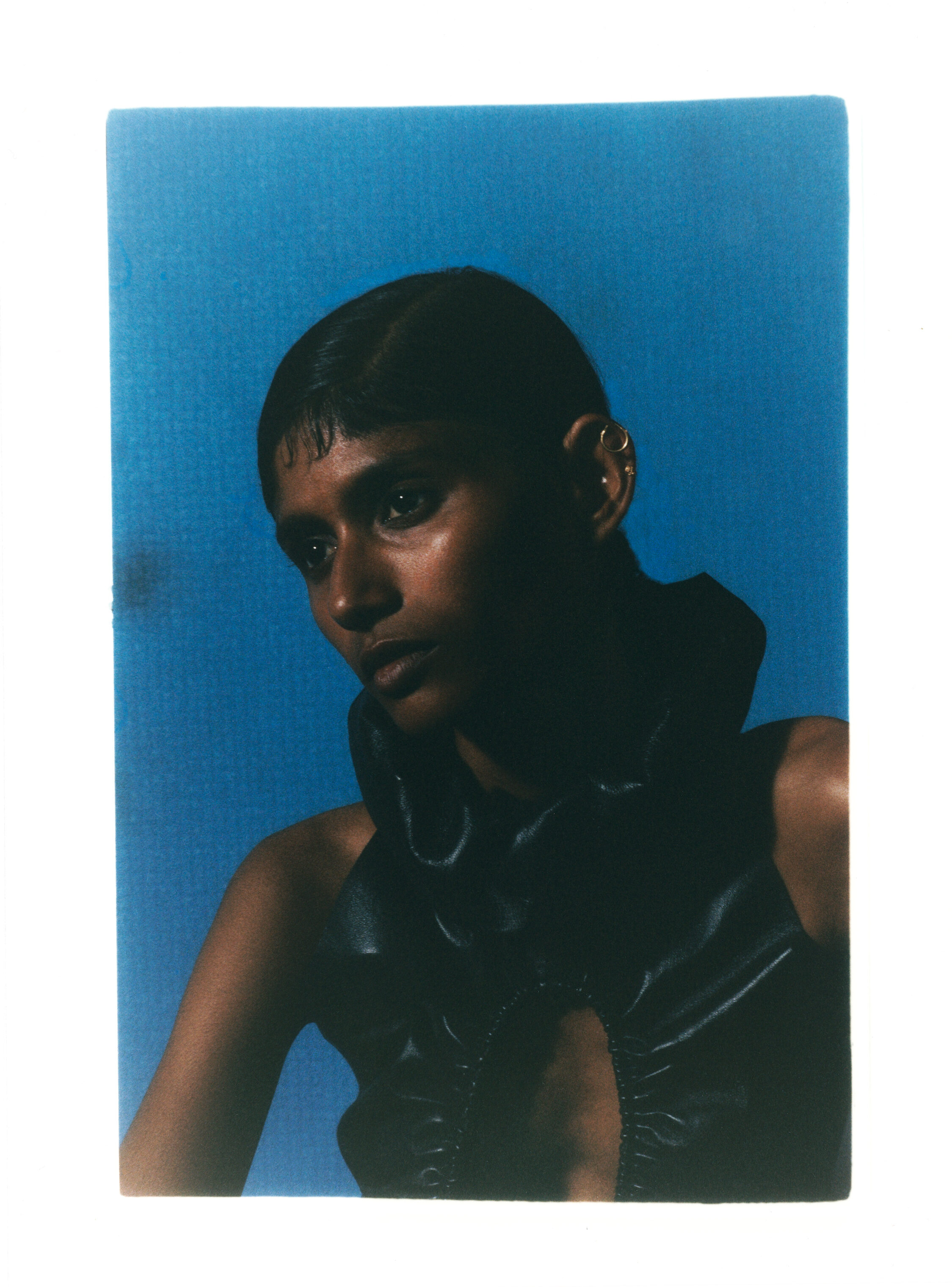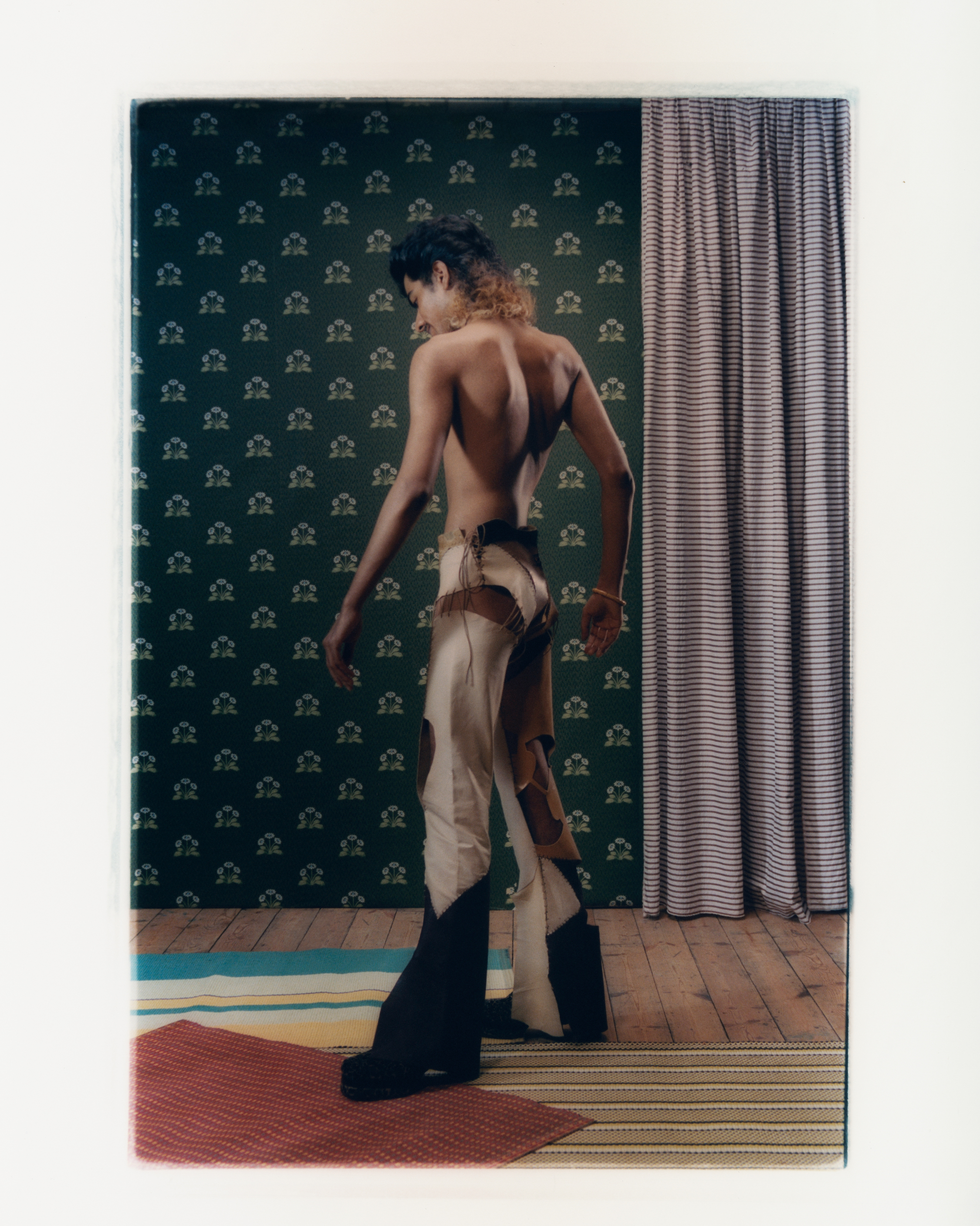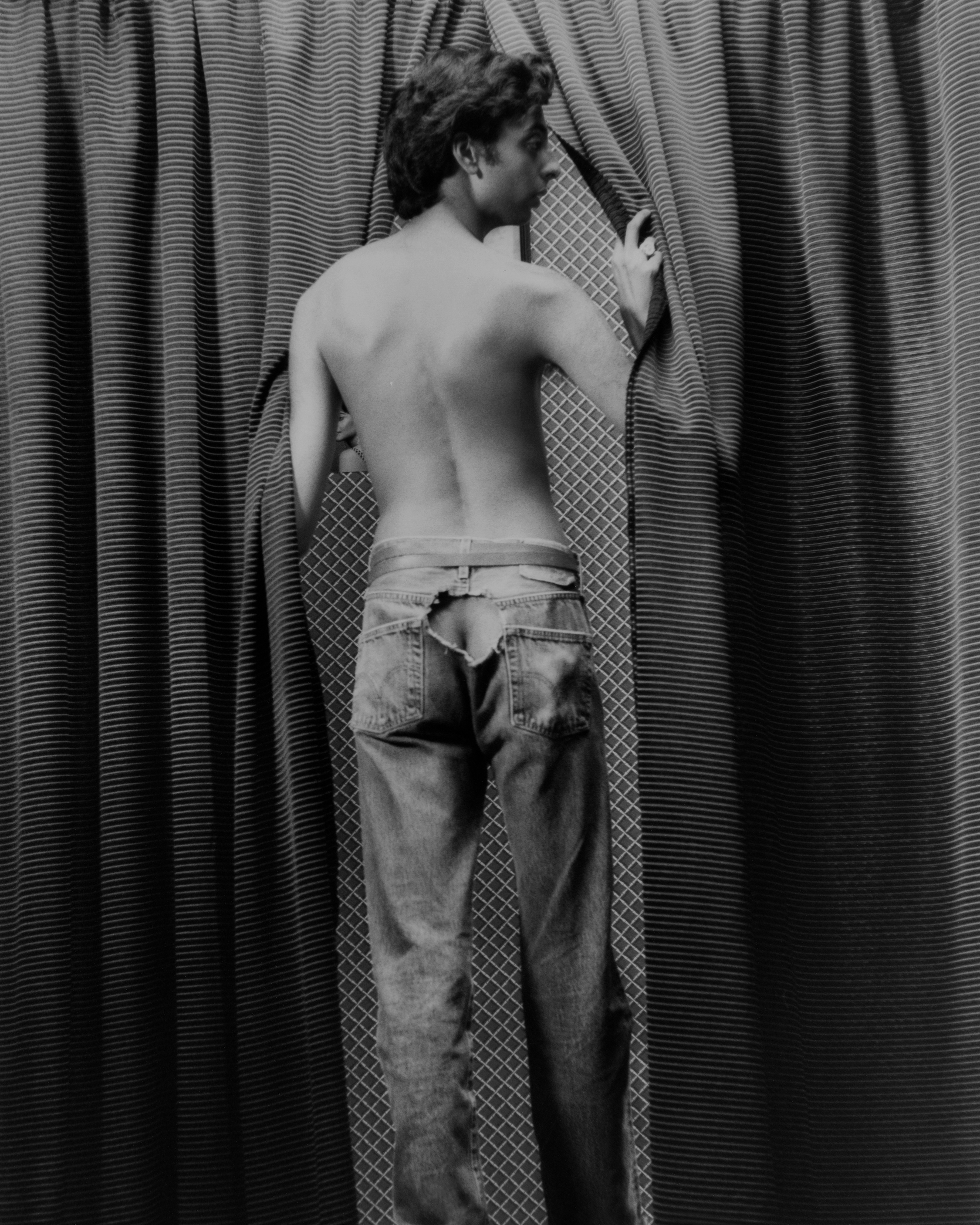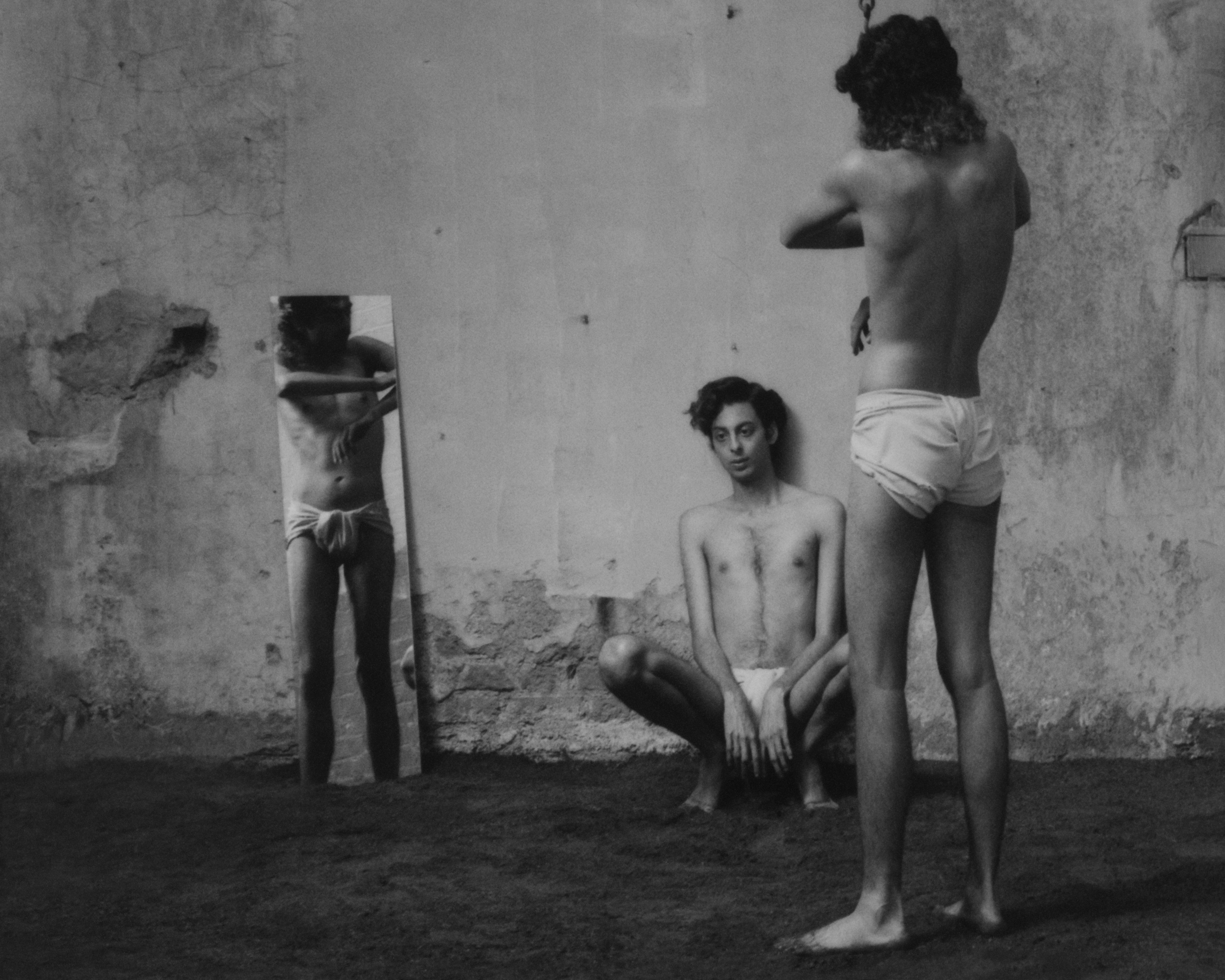All images © Tara Laure Claire Sood
Tara Laure Claire Sood is fascinated by South India’s retro portrait studios, reimagining them with fresh Bollywood and fashion tropes
Tara Laure Claire Sood has long been intrigued by portrait studios, recognising their importance in Indian photographic history and as sites of self-fashioning for families, couples, colleagues and models eager to project a certain image. Her project The Studio pays homage to these spaces while also exploring two personal threads. First, there is Sood’s experience shooting fashion editorials and working with stylists and models; second, her desire to produce a joyful series on India, countering depictions of the country she has seen while living in London and Paris. Hers is a vision of a nation made (sometimes literally) using its own mirrors.
“The idea was to bring together all these emotive elements of the studios, and then my personal style took it into a different direction,” Sood says. She was inspired by retro studios in Karnataka and other south India states, but The Studio was shot entirely in London and gradually departed from its fashion premise towards a fine art self-referentiality, with lamps, mirrors and the edges of decorative sets visible in the images. In the end, she discarded many of the clothes she had initially brought for the shoots. In the final series, a man looks over his shoulder, shirtless as he gently prises open ribbed curtains. In another shot, a couple beam while sitting on a moped in front of a nursery-like mural of flowers and blobby clouds.


“In the west, you’re taught to deny yourself and deny India. It’s my duty to make a body of work romanticising it”
Sood etched or painted on several of the prints, echoing the DIY techniques studio owners used for subjects who lacked the means to buy lavish saris and tunics. The Studio also traces photography’s mechanical evolutions, nodding to ambrotypes and tintypes as well as the bright fabric backdrops favoured as when digital cameras became widespread. Sood drew inspiration from prints in Indian family albums and on glass plates, which she found in flea markets in India and Europe. She also referenced imagery from Africa, another big market for portrait studios, and mentions Malick Sidibé and Samuel Fosso. Bollywood hairstyles and poses also found their way into her series, which has a distinctly theatrical air, the models like actors rotating through various roles as if posing for promotional pictures from a multi-act comedy.
Born in France to a Punjabi family, Sood attended boarding school in the Himalayas before studying performance art at Central Saint Martins. After travelling in India to research The Studio, she began to critique the western perspective she had absorbed in London and Paris. “When you’re in Europe, everybody seems to have their blinders on [when thinking about India],” she says. “They can’t see past the chaos – there’s this need to dilute things.” She wanted to pursue a project that celebrated the country’s visual culture and ingenuity, factors rarely recognised beyond its own borders. She also sought to represent everyday people without resorting to poverty porn, and the familiar depictions in which working-class Indians are defined solely by their living conditions.

Sood is planning two other series in this vein, constituting what she terms a chapter-by-chapter survey of India’s “dying arts and artistry”. The next body of work will document magicians in the country, whose tricks are often dumbed down when emulated in the west. After that she plans to follow the country’s dwindling equestrian scene, tracing regional nobles and breeding practices which stretch back centuries. The Studio is about positivity through complexity, about layers of references that move beyond the equation of an Indian model or “brown facPoe” as adequate representation for a vast, heterogeneous country. There remains a postcolonial hangover in the diaspora, Sood says. “In the west, you’re taught to deny yourself and deny India. It’s my duty to make a body of work romanticising it.”

